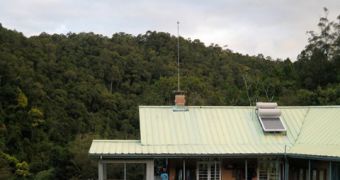Just today, the Centre Valbio research facility, located at the edge of Madagascar's rainforest, was officially inaugurated.
Its construction, which lasted for about ten years, involved using only green materials found in the nearby regions.
As well as this, the center is powered by means of renewable energy sources and benefits from waste-water management, natural cooling and gardens grown on the top of the building.
It can therefore be said that, in spite of its state-of-the-art laboratories and high-speed Internet connection, the center goes without negatively impacting the environment. Mongabay explains that the researchers and scientists who are to be employed at the Centre Valbio from now on are expected to focus their efforts both on protecting Madagascar's wildlife, and on aiding members of the local communities who are experiencing either financial or health problems.
As environmentalists and conservationists argue, Madagascar is currently both one of the world's poorest countries, and one of the most biologically diverse.
Therefore, should the Centre Valbio succeed in owning up to both of its aforementioned promises, odds are that both the natural sciences and the people of Madagascar will only have to benefit.
Apparently, the decision to build a research facility in this part of the world is due to a discovery made quite a few years ago by Patricia Wright, a Stony Brook University biologist.
Thus, back in 1986, she found that the rare and endangered golden bamboo lemur was living in the nearby woods, and this lead to a considerable portion of the rainforest being declared a natural reservation.
Now known as the Ranomafana park, this particular area is argued to house countless species that have yet remained undiscovered by scientists.
Therefore, it is believed that, with the help of this new research center, considerable progress will be made towards speeding up the process of finding and classifying new specimens.

 14 DAY TRIAL //
14 DAY TRIAL //